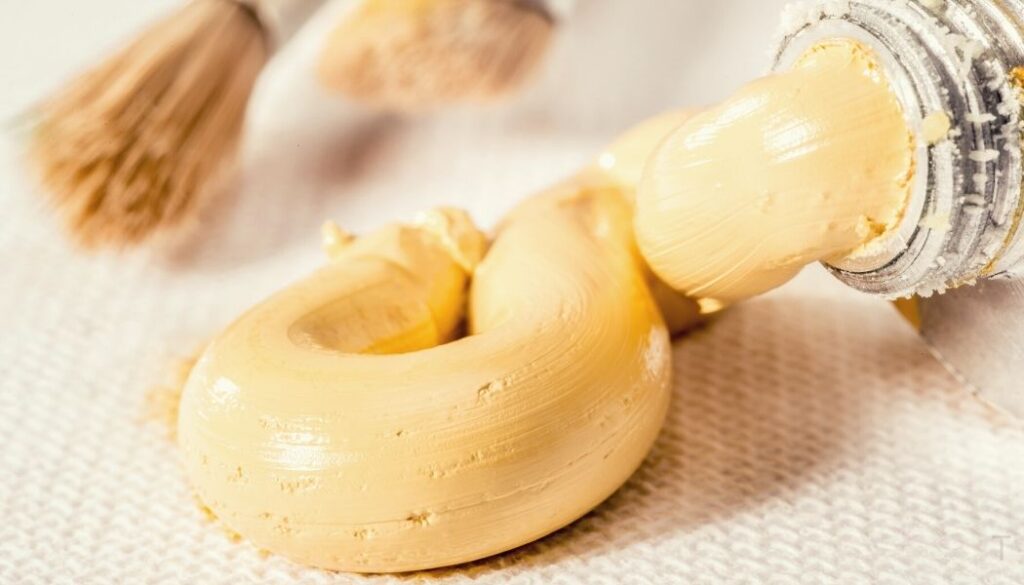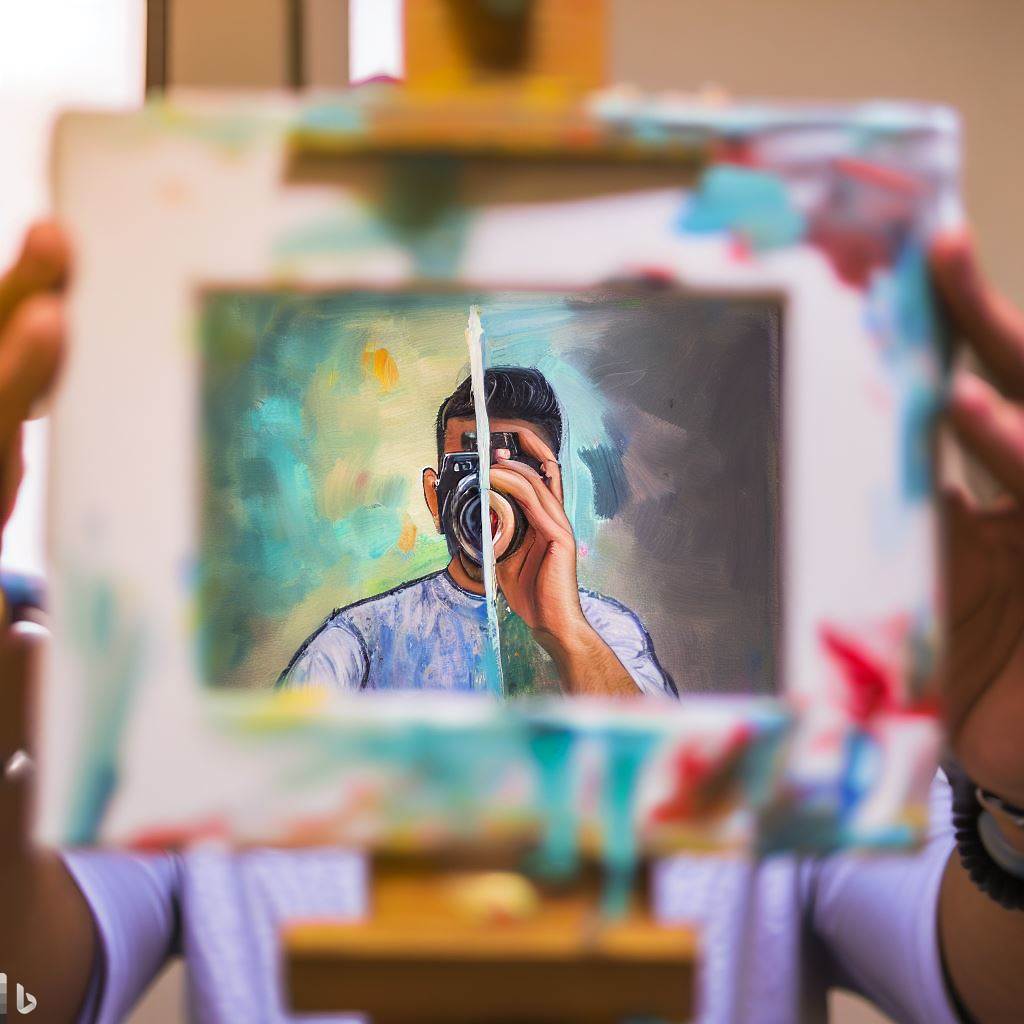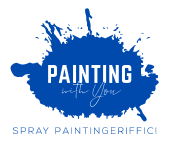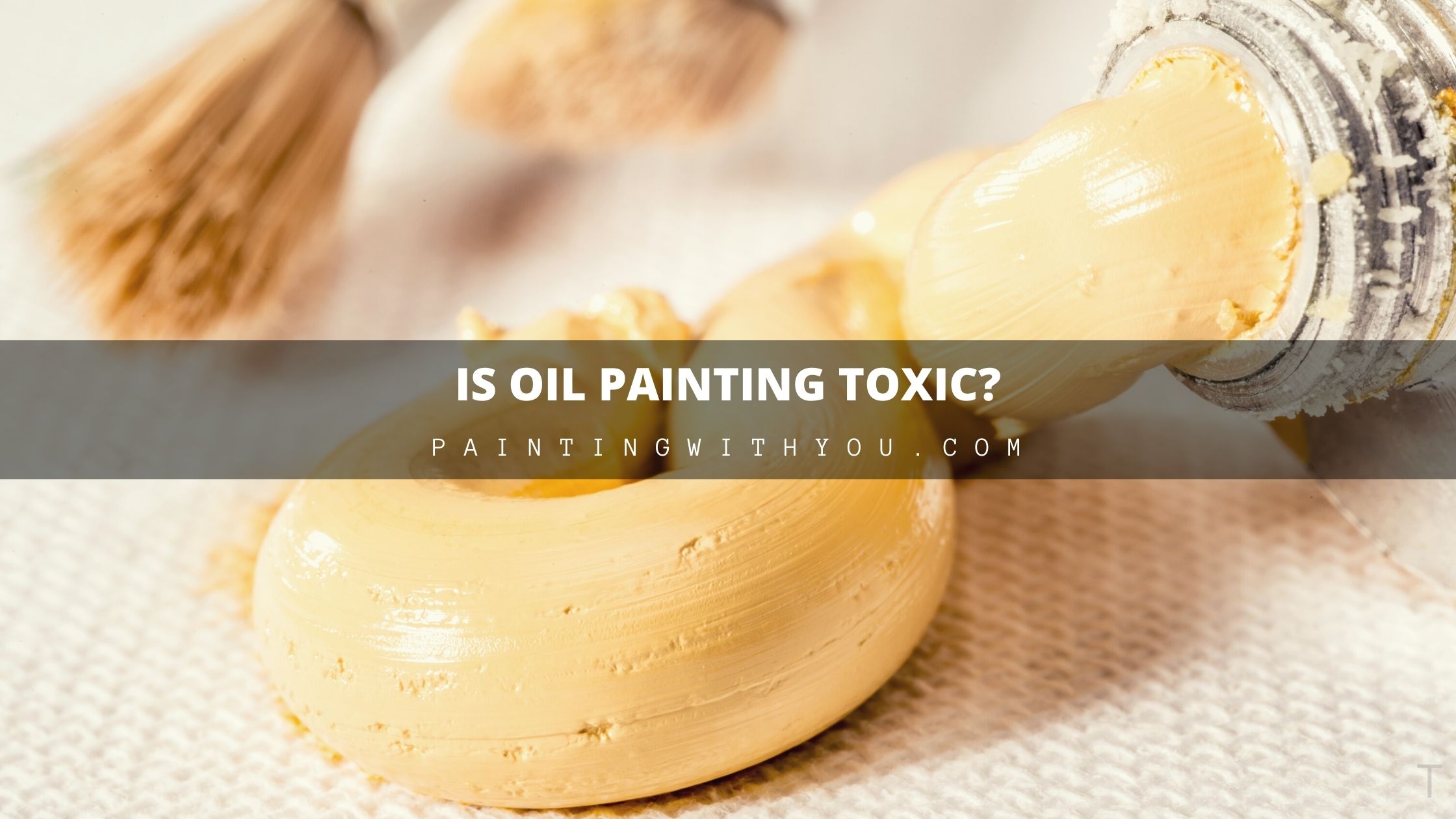You have probably heard that the fumes of oil painting are dangerous. While they have more fumes than latex, it’s a bit more complicated than you think. So is oil painting toxic?
Not all oil paints are toxic, and the color of these paints varies depending on the pigment. Some are hazardous to inhale, while others have no odor and have no negative effects on you in person.
So the question you’re probably wondering is if you should take a risk or avoid oil painting altogether? Keep reading, and I can help you figure out more if oil paint is the route you want to go in the future. As well as how to make sure it’s safe for you.

Are Oil Paints Toxic?
It might surprise you, but not all oil paint is toxic, as the main ingredient is pigment and oil. That has always been the main ingredient, and not every pigment is toxic nor even has a smell. The toxic elements are more of the pigment or the solvents we have combined with it.
The fumes people associate with oil paint usually come from the solvents like turpentine. Some people can use that to make the pigments more fluid, but it comes with a price.
Understanding Oil Paint Composition
Oil paints are made up of just two main components – pigments and binders. The binder is usually a plant-based oil like linseed, safflower, poppy or walnut oil. I choose linseed oil as my preferred binder since it dries well and allows me to manipulate the paint easily.
The pigments provide color and come from natural or synthetic sources. I try to use synthetic pigments as much as possible since many natural pigments contain heavy metals.
Can you buy non-toxic oil paint?
There is an alternative you can obtain that does not use toxic chemicals. Search for linseed, walnut, or safflower oil paints. They all are non-toxic alternatives to mass-produced oil paints. You can even buy the colors and mix them with oil yourself, though keep in mind that some pigments are toxic.
For Solvents, there have been new non-toxic alternatives like Citrus-peels Solvents made with, as you can guess, citrus peelings. Also, the Archival Odorless slow drying solvent is entirely odorless.
What Makes Oil Paint Based Toxic?
The main two culprits that make oil paint toxic are certain pigments and the solvent used with the paint. For example, lead-white, cobalt, and cadmium are all poisonous pigments used commonly in them, including latex.
They can cause health complications if you eat or breathe in the dry pigment, making oil paint spray with these pigments more dangerous than other colors.
If you take the proper precautions to lower exposure to them, you can avoid these issues. Thankfully it’s only an issue if it is wet, and thus, there are still fumes as once it dries, they are safe to be around.
While many oil paints aren’t toxic, that doesn’t mean they can’t contain some toxins. Also, be careful of the things you use when trying to clean up. For example, if trying to clean your brushes instead of turpentine, you can use ivory-based or oil cleaning soap, or even oil itself can help.
TIP: All paint and pigment must be labeled by law with a warning if they contain a toxic element, so if in doubt, check the labels for warning.
How do I handle toxic oil paint or solvent?
If you’re buying oil paint with a toxic solvent like turpentine, mineral spirit, or toxic pigment, handle it carefully. The dangers of the fumes can cause allergic reactions and poisoning if you have prolonged exposure. Some are even carcinogenic and something to keep in mind.
Some things you can do to reduce the effects:
- Keep the containers closed and sealed when not in use.
- Make sure the room’s well ventilated as you work, open windows and have fans on.
- To avoid an allergic reaction to your hand, you can wear gloves when dealing with the solvent.
- Keep yourself fully covered up and wear long sleeves.
- Use a face mask to help reduce the toxins you inhale.
- Please do not sleep or hand around in the room while it is drying once completed.
- Dispose of waste properly according to hazardous waste guidelines.
NOTE: If you start to have an allergic reaction or start feeling ill from the fumes. Call a medical professional and tell them exactly what kind of paint or solvent you were using.
How long do oil based paint fumes last
It can take as long as oil paint dries if you aren’t taking the precautions to help the process. It can take two to three days, usually for the paintings to dry and fumes to dissipate. However, if you use a fan and keep the window opened, it can help speed the process.
NOTE: Do not sleep or stay around the object while it is drying.
How do You avoid Toxic oil paint and use non-toxic?
If you’re the kind of person that can’t stand the idea of paint having any risk, you can settle for making your own or buying a specific brand. You can purchase the pigments and oils like linseed or safflower oil online or from art stores that sell them. Do be aware it does take longer to dry when using this method unless using a drying agent.
There are also alternative paints like Artisan Water Mixable Oil Color that try to eliminate the toxic elements. Instead of using a solvent, it can use water instead. Meaning you won’t have to make any extra purchases, and you can just keep water at hand. Modern advances have made it so that solvent is optional and not required for your paint projects.
Health Concerns for Artists and Suggestions for Protection
It’s important for artists to be aware of health risks from long-term exposure when oil painting:
- I make sure to take regular breaks when working for extended periods. This gives my body a rest from any fumes.
- We should monitor our health and be aware of any reactions to painting materials like headaches, dizziness or breathing issues. Listen to what your body is telling you.
- Proper studio ventilation is crucial. Use fans, open windows and avoid small enclosed spaces.
- I limit skin contact with solvents or pigments by wearing gloves and long sleeves. Frequent hand-washing is also advised.
- Respirator masks provide protection when mixing dry pigments. Avoid breathing in paint dust.
How do I clean my brush if not with turpentine or other toxic solvents?
You can clean your brushes using the citrus-peel solvent as a safe alternative, but oil can help clean it off as well. To clean out the pigment, you can use any oil to clean your brushes, like safflower oil and linseed oil.
Then once there is no color on the brush, you can use soap water to get rid of the oil leftover. Also, there are oil paints that allow themselves mixed with water.
Here are the steps if using the oil cleansing method:
- First, use a rag to squeeze out any liquid from the brush.
- Dip it into the oil, making sure to swish it around till there is no pigment.
- Once finished, use soap and water to clean the oil from the brush and do not allow it to dry on it.
NOTE: Do not pour the oil down the drain once done, as it can mess up your pipeline, causing damage.

Is oil painting considered Hazardous waste?
Even if you have taken steps to make oil paint as non-toxic as possible, it is still considered a hazard to the environment. Most oil paints contain a VOC(Volatile Organic Component) which the EPA considers a hazard.
Meaning you should never flush it down your drain or toss oil paint into the trash. It’s a very flammable material when wet, and once dried, even if no longer prone to fires, it is combustible.
So there are procedures that need to be taken before you throw out your waste if you aren’t recycling it. Some organizations can help you find ways to dispose of it and guide you through the process. Suppose you have a bulk of the waste. In that case, you can combine the debris in a container and take it to your nearest hazardous waste treatment facility.
Related Questions
Is oil paint toxic to breathe?
In my experience, oil paint itself does not release fumes that are toxic to breathe. The binders like linseed oil have little to no odor. Some solvents like turpentine do emit strong fumes, so I work in rooms with open windows to ventilate properly. As long as the studio has good air flow, inhaling while oil painting has not been an issue for me.
What are the dangers of oil painting?
The main dangers I’m aware of are potential allergies or reactions to certain pigments, and inhaling solvent vapors in confined spaces. I minimize risks by choosing synthetic, non-toxic pigments when possible, using odorless thinners, and staying alert for any negative response from my body. Proper ventilation and avoiding constant skin contact provide protection.
Is it safe to use oil paint indoors?
I regularly use oil paints indoors without issue. Having adequate ventilation by opening windows or positioning fans is critical. I also keep solvent containers sealed tightly when not in use. As long as I provide air flow and don’t expose myself to concentrated fumes, oil painting indoors has been safe in my experience.
Is oil paint toxic on skin?
Prolonged skin contact with certain pigments could potentially be hazardous, so I wear gloves when I oil paint. I also wash up with soap and water after painting sessions. Brief contact while painting has not caused me problems as long as I clean up thoroughly later. Avoiding ingesting pigments is definitely vital for health. With reasonable precautions, I have not found oil paint to be toxic on my skin during the painting process.

